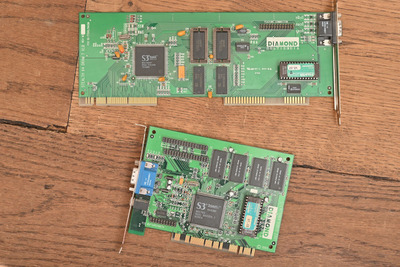Reply 80 of 107, by starcube
Tetrium wrote on 2020-05-27, 15:55:And besides, newer parts don't automatically equal more performance anyway. Not when it comes to 486 machines.
That's not what I was saying.
I think the more accurate thing to say is that more modern PCI peripherals on a 486 offer better performance up to a point at which they become bottlenecked by the processor and chipset.
On a 486, you will certainly get faster graphics performance from a PCI S3 Trio64+ than a VLB Cirrus Logic CL-GD5428, but not much past that makes any real sense.
I'd certainly not try to stick a Voodoo or a Riva TNT in a 486 and expect some kind of miracle.
